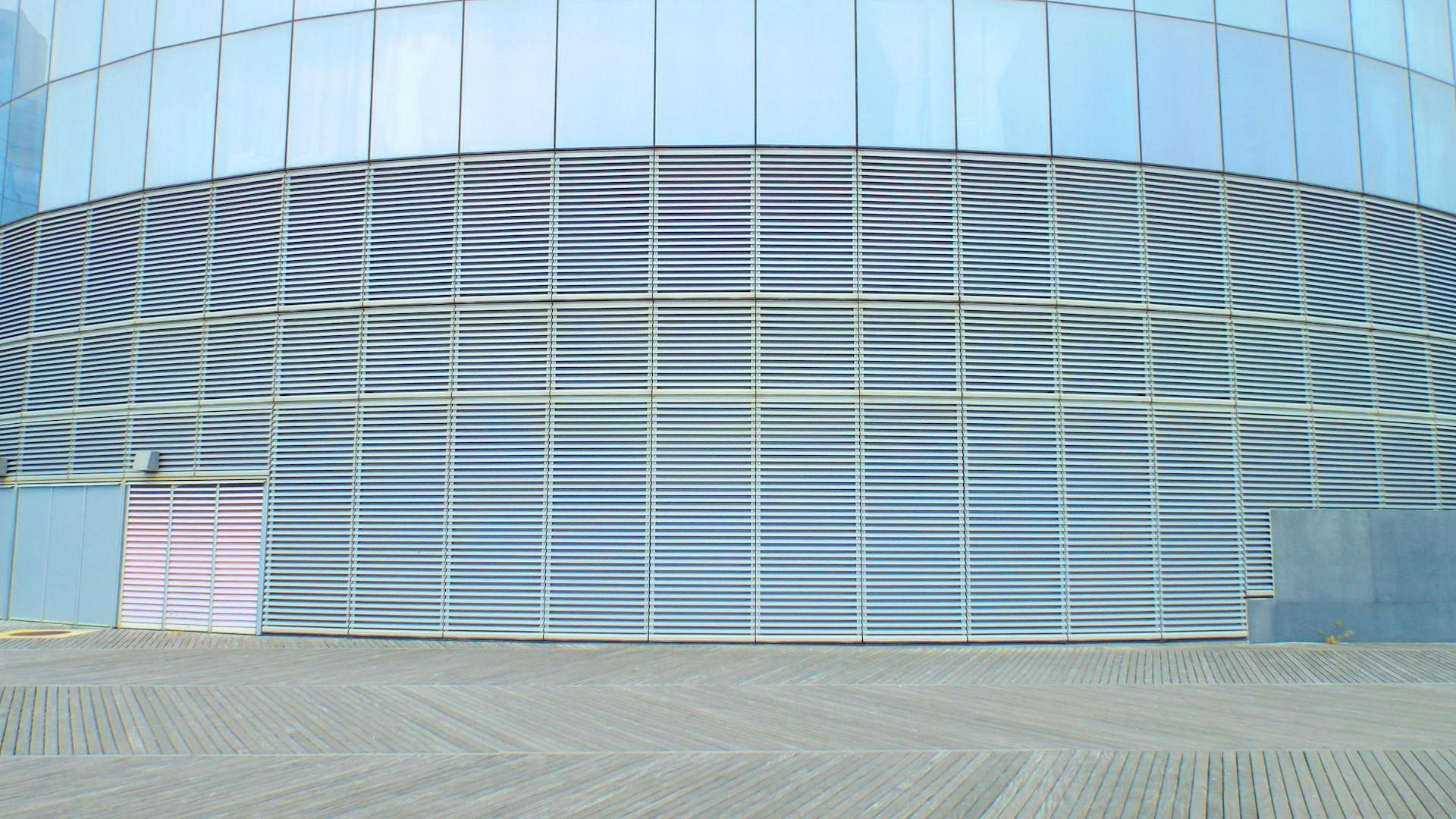
Solar shading refers to the techniques and materials used to reduce solar gain in buildings. Simply put, it is an architectural feature that helps reduce the amount of sunlight that enters a building. This technique has become increasingly popular in recent years, particularly with the rise of energy-efficient buildings like the Salesforce Tower in San Francisco. With its uninterrupted glass windows spanning 10 feet across, metal sunshades were installed to reduce solar gain and provide shade for occupants.
The benefits of solar shading are numerous. Not only does it help reduce energy costs by minimizing the need for air conditioning, but it also improves comfort levels inside buildings by reducing glare and heat. Moreover, it protects interiors from harmful UV rays that can fade or damage furnishings over time. Vittoria Zupicich, a renowned architect known for her sustainable designs, explains that solar shading is essential for creating comfortable and healthy spaces while minimizing the environmental impact of buildings. In this article, we'll give you a quick overview of different types of solar shading techniques and how they work to achieve these goals.
Quick overview of the story
Quick Overview of the Story: What is Solar Shading?
Solar shading refers to the use of solar shades, an important element in achieving a building's net energy goals. By blocking direct sunlight, shades reduce heat gain while maintaining natural light in interior spaces. Fixed shades are common features in architectural design and often used on big windows with spectacular view expanses, serving as focal points for modern designs.
Dynamic shades offer significant benefits ranging from energy savings to indulging biophilic design. However, pronounced downsides such as glare and heat gain must be addressed when deciding which type of shade to install. Whether you're designing your new home or upgrading your office space, understanding solar shading can help you make informed decisions that enhance comfort and energy efficiency.
Discover How Solar Shading can Enhance Your Experience

Solar shading refers to the use of various techniques and materials to block or filter out solar heat and light in a building. The purposeful insulation of buildings effectively manages solar heat, making for a visually comfortable indoor space that remains cool even during the hottest summer months. This solution is essential year-round, achieving glare-free space while maintaining an outdoor view.
Solar shading offers freedom in multiple ways, providing a wide variety of options for exterior and interior design. It can be installed on windows, facades and lighting units, creating an ideal solution for minimum energy demand by helping manage temperature and lighting within the indoor environment. In conclusion, solar shading is an excellent way to enhance your experience by ensuring that you have a comfortable and visually pleasing space all year round.
Illuminating Spaces: An Introduction to Daylighting
Solar shading refers to a set of techniques designed to control the amount of sunlight that enters a building through its windows. This is particularly important for buildings in hot climates, where excessive heat gain can lead to uncomfortable indoor temperatures and increased energy consumption. By reducing the amount of direct sunlight that enters a space, solar shading systems like blinds, shades, and louvers can help combat heat gain and reduce the need for artificial cooling technologies.
However, it's important not to overlook the added benefits of natural light. Daylighting offers significant energy savings due to reduced reliance on artificial lighting sources, as well as potential passive heating benefits in cooler climates. By carefully balancing solar shading with access to natural light, designers can create comfortable and sustainable indoor environments that promote productivity, health, and wellbeing.
Discover the Essential Shading Techniques You Need to Know!

Have you ever wondered how artists create such realistic shading in their drawings? The answer lies in basic shading techniques like hatching, cross-hatching, stippling, scumbling, and drybrushing. These techniques involve the use of parallel lines, single dots, loose circles, or scribbling to strongly imply light and dark values.
Multiple layers are key in creating varied levels of shading. For example, dark values can be achieved through cross-hatching while lighter areas can be blended softly using tonal blending. Gradual tone can also be created through scumbling or layering with a dry tool. Experimentation mastering these basic techniques is essential for any projects that require shading.
Each shading technique serves a different purpose in creating texture and depth within an artwork. Whether it's shaded areas with a specific pattern of strokes or textured areas that need blending and tonal variations – there's always a shading technique that will work best for your piece. So don't hesitate to try out new methods – from simple hatching to finally scribbling!
1. Leave a Comment
"Solar shading" refers to a technique used to control the amount of sunlight that enters a building, usually through windows. This can be achieved using various materials and designs, including overhangs, awnings, blinds, or shutters. Solar shading not only helps regulate indoor temperature and reduce energy costs but also prevents glare and harmful UV radiation from damaging furniture or artwork.
The Crucial Role of Shading in Solar Collectors

The crucial role of shading in solar collectors cannot be overstated. Solar collectors are incredibly important devices that capture sunlight to generate usable electricity. When sunlight hits the solar collector, it is converted into energy through photovoltaic cells. However, too much direct sunlight can cause potential damage and lead to malfunction in the system.
This is where shading comes into play. Adequate shading is necessary to prevent damage from high winds, heavy rain, and intense heat. Installing an opaque covering strategically over the solar collectors can reduce the amount of direct sunlight hitting the system, meaning less potential damage and malfunction. This ensures that the solar collector can operate at its maximum efficiency for a longer period of time.
Without proper shading, solar collectors are susceptible to reduced performance due to overheating or other malfunctions caused by too much direct sunlight exposure. Therefore, when designing or installing a solar collector system, adequate shading must be taken into consideration to maximize energy generation and minimize potential damage or malfunction. In conclusion, adequate shading plays a crucial role in ensuring that solar collectors generate the maximum amount of usable electricity while avoiding any potential damage or malfunction caused by intense heat or direct sunlight exposure.
What are 4 shading methods?
Shading methods are techniques used to create tonal and texture effects on a two-dimensional surface. There are basic shading methods that artists use such as hatching, cross hatching, stippling, and smooth shading. Hatching is a shading method that involves closely spaced parallel lines to create tonal effects. Cross hatching is a shading method that uses two or more sets of hatching lines at an angle to create darker and lighter shades. Stippling is a shading method that involves carefully placing dots of varying sizes on the picture plane to simulate three-dimensional form.
Smooth shading is another shading method where artists create graduated tonal variations by gradually blending light, mid-tone, and dark colors together to create richness in the picture plane. This technique can simulate three-dimensional form by creating the illusion of light falling across the surface of an object. Shading methods can be used alone or in combination with other techniques to create a variety of effects.
Ultimately, whichever shading method you choose depends on your desired outcome for your work of art. Hatching and cross-hatching produce different visual results than stippling or smooth shading, but all four methods can contribute to unique textures and tonal effects on the picture plane. With practice and experimentation, any artist can become proficient in these techniques and incorporate them into their work seamlessly.
Frequently Asked Questions
Can solar panels work in the shade?
Yes, solar panels can still work in the shade to a certain extent, but their efficiency will be reduced as there is less sunlight available for them to convert into electricity.
Should I use a solar PV or solar thermal system?
Solar PV systems are best suited for generating electricity, while solar thermal systems are ideal for heating water or space. The choice between the two depends on your energy needs, location, and budget.
What effect does shading have on solar panels?
Shading can significantly reduce the energy output of solar panels. Even partial shading can cause a drop in performance, as it disrupts the flow of electricity between cells.
What is solar shading design?
Solar shading design is the process of strategically placing various shading devices to prevent excessive exposure to the sun's heat and glare in a building's interior spaces. It can significantly reduce energy costs by minimizing the need for artificial cooling and lighting while enhancing occupant comfort and productivity.
Can solar shades see through?
Yes, solar shades can see through to some extent depending on the material and density of the shade. They are designed to block the sun's glare and harmful UV rays while still allowing natural light to filter into a room.
Featured Images: pexels.com


